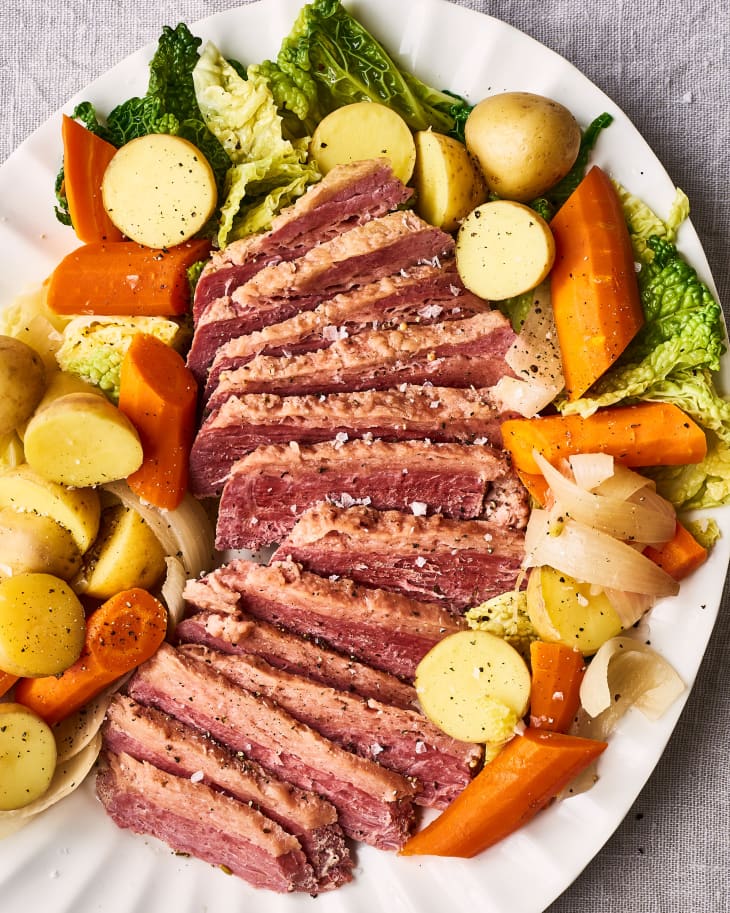5 Mistakes to Avoid When Making Corned Beef
Come mid-March, mentions of the iconic Irish-American classic of corned beef and cabbage begin to show up everywhere. Menus feature it for dinner and recipes for how to make it from scratch pop up on just about every cooking site — including our own. That’s because this meal has become a delicious way to celebrate elements of the Irish-American experience. And for the intrepid cook, making corned beef at home is a satisfying cooking project. However, there are five mistakes to avoid and by remembering these, you’re well on your way to cooking a delicious corned beef.
New to Cooking Corned Beef?
Whether you’re making corned beef for the first time this year (check out our beginner’s guide!) or an old pro curious about how others do it, take a look at this list of the things you don’t want to do. It’ll help you reach corned beef perfection.
1. Not rinsing the meat before cooking.
If you cook the meat straight from the plastic packaging or pulled from the brine solution in the fridge, you just might be in for a saltier meal than you bargained for.
Do this instead: Whether you bought a ready-to-cook corned beef or you cured your own, rinse the meat several times under cool water to remove any excess salt. But don’t think this means you’re rinsing away all the flavor; by this point, the meat is fully infused with it.
2. Cooking over a high temperature.
High heat is not a friend to brisket. When cooked at a boil for too long, corned beef is likely to turn out tough and chewy, rather than soft and tender.
Do this instead: Regardless of the cooking method, corned beef is best cooked over low heat. A low, gentle simmer on the stovetop or in the slow cooker are two methods for cooking up soft, tender slices of corned beef every time.
3. Not filling the pot with enough water.
Simmering corned beef on the stovetop is a tried-and-true method that, when done right, results in very tender beef. One of the keys to getting there is the amount of water in the pot. From start to finish, when there’s not ample liquid to cover the meat, your dreams of tender corned beef might be crushed with a tough, chewy result.
Do this instead: Start by filling a stockpot with enough water so the beef is totally submerged. Remove the lid to check the level of liquid during cooking and add more water, if necessary. This small step will help deliver a super-tender corned beef to the table.
4. Not cooking the meat long enough.
Brisket, the cut typically used for corned beef, is a naturally tough cut of meat. Cooking this beef is a process that can’t be rushed. Even when the meat is cooked through, it needs more time to transform the chewy bite into one that’s deliciously tender.
Do this instead: To slice into the tender pieces of meat you expect, cooking corned beef takes patience. It’s a tough cut of meat that benefits from a lengthy cook time. For stovetop cooking, plan on at least three hours for a three-pound corned beef, or eight to 10 hours for a three- to four-pound cut that’s prepared on low in the slow cooker.
5. Cutting the meat incorrectly.
The way you slice your cooked corned beef actually makes a big difference. Slicing meat with the grain (or in the same direction as the muscle fibers) should always be avoided, as it leaves you with a chewier piece of meat.
Do this instead: Treat corned beef just like steak. Look for the lines of visible muscles fibers on the meat — this is the “grain” of the meat. Always sliced corned beef against the grain (rather than with it). Cutting through the muscle fibers shortens them, and makes each pieces easier to chew.
A Recipe for Corned Beef + More St. Patrick’s Day Favorites
Your turn! What are your best tips for cooking corned beef? Tell us in the comments!
